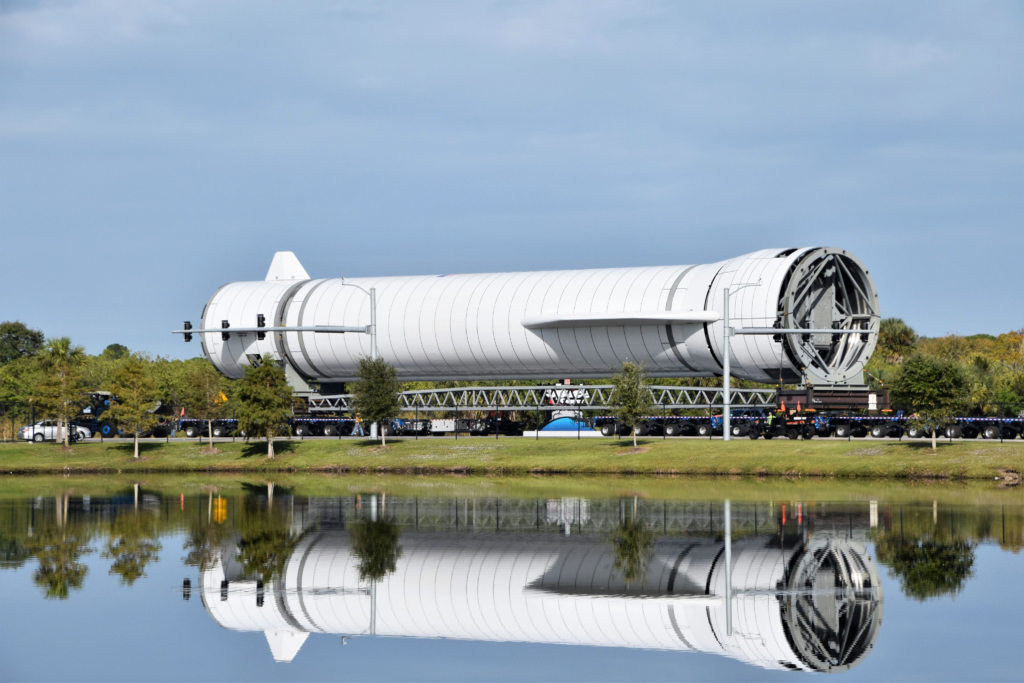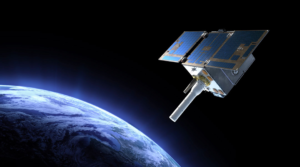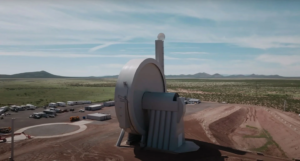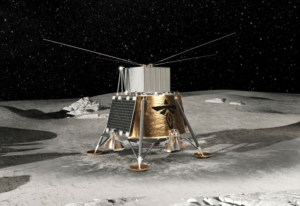
What Progress Has Been Made On Blue Origin’s New Glenn Launch Vehicle?
New Glenn is a next generation launch vehicle hoping to provide Blue Origin with both powerful and consistent capabilities. For around a decade, since 2012 this rocket has been under development. Unfortunately, unlike many other projects within the space industry, Blue Origin has kept very quiet throughout this time period in regard to progress and different milestones related to this launch vehicle.
On the bright side, they have been a lot more open with core components such as the BE-4 engine, and we still have learned more about progress through various sources. This includes new fairing tests that were recently completed, in addition to other news. Not to mention the first launch of Vulcan using two BE-4 engines right around the corner.
All of which are valuable aspects of New Glenn’s future and exactly what Blue Origin plans. It’s also important to point out that the New Glenn project is quite ambitious and Blue Origin still has a lot of work left before the first launch. Here I will go more in-depth into some of the recent tests we saw, BE-4 engine progress, what to expect in the future, and more.
Recent Tests

Over the past couple of weeks, we have seen a decent amount of activities related to New Glenn’s payload fairings. For example, earlier this month Blue Origin began testing payload fairing recovery operations. Here the company placed the fairing half in the water which floats. They then picked it up with a large crane and placed it on a stand. Finally using two separate cranes, they flipped and twisted the fairing before being placed on the truck. The video of this process helps put in perspective the massive size of these fairings. To be exact, New Glenn’s standard offering PLF measures 7 m (23 ft) in diameter and 21.9 m (72 ft) tall. The bi-sector assembly consists of two monolithic half shell composite sandwich panels manufactured in-house. As far as the question of why is Blue Origin working to recover the fairings, a lot of it has to do with cost. While we don’t know the exact cost of these fairings, we can compare them to SpaceX to get a better idea. The Falcon 9 fairings for example cost around $6 million. Based on the size and material used for Blue Origin’s, it likely costs a decent bit more.
In addition to this recent water recovery test, earlier this year around February, we watched more tests related to the fairings with a jettison test. Blue Origin expressed that they were quite happy with the result of this test and the progress on the system. The PLF halves are joined laterally by a thrusting rail assembly, and at the aft end by a circumferential frangible joint, which together provide rapid, debris-free separation of the halves from each other, the fixed adapter, and the second stage. The PLF halves jettison shortly after second engine ignition on the second stage, and they are designed to thrust away to preclude contact with both the second stage and the payload by more than the required 25.4 mm (1 in) clearance.
While it’s exciting to see progress related to New Glenn, the company will need a lot more than payload fairings to reach orbit. Thankfully, one of the most crucial tests of New Glenn is set to happen in a couple of months thanks to ULA’s Vulcan. The BE-4 is an immensely complex and vital component to the future of New Glenn and what its capable of. In this case, Tory Bruno has continued to provide updates and help give us a better idea of exactly what’s going on. On December 1st he replied to a tweet saying, “Probably. @blueorigin has made BE4 engine testing pretty routine. Hot firings every week…” This obviously is a promising sign considering Vulcan requires two and New Glenn will use 7 on the first stage. As for Vulcan’s first launch, the rocket will soon begin some of its final tests before launching assuming all the results are promising. This launch will then provide a lot of important flight data related to BE-4 and its capabilities. Information that will be directly applied to New Glenn’s future. In terms of dates, Blue Origin is targeting 2024 for a first launch, however, a more realistic timeframe is closer to 2025 or even later.
New Glenn’s Future

Now that we know more about some of the progress on New Glenn’s failings and its BE-4 engines, we can take a closer look at its development path and the design of this rocket. The main assembly of the New Glenn launch vehicle will occur in the Blue Origin rocket manufacturing facility in Florida, near Launch Complex 36 (LC-36) which the company leased from Spaceport Florida. Tooling and equipment for the factory began to be ordered and built in 2015. In July 2018, the build of the largest device, a 16 m (52 ft) tall × 41 m (135 ft) long × 13 m (43 ft) wide Ingersoll “Mongoose” cryogenic-tank and fairing fabrication machine, was completed after a three-year design/build process. As of September 2018, Blue Origin had invested over US$1 billion in its Florida manufacturing facility and launch site. By now much more has been built to try and facilitate this next generation launch vehicle’s future.
As far as its past, after initiating the development of an orbital rocket system prior to 2012, and stating in 2013 on their website that the first stage would do a powered vertical landing and be reusable, Blue Origin publicly announced their orbital launch vehicle intentions in September 2015. In January 2016, Blue Origin indicated that the new rocket would be many times larger than New Shepard even though it would be the smallest of the family of Blue Origin orbital vehicles. Blue Origin publicly released the high-level design of the vehicle and announced the name New Glenn — with both two-stage and three-stage variants planned — in September 2016.
One of the biggest questions in relation to New Glenn’s design is whether or not the upper stage will be reusable. Back in 2021, Information became public that Blue Origin had begun a “project to develop a fully reusable upper stage for New Glenn,” under the name “Project Jarvis”, just as SpaceX is aiming to do with their Starship second stage. If Blue is able to realize such a second stage design and bring it into operational use, New Glenn would become a fully-reusable launch vehicle and would benefit from a substantial reduction in cost per launch. However, this adds even more work to an already full plate for the company. Realistically New Glenn’s first launches will be just partially reusable with the upper stage being expended. However, it’s possible that far in the future they adapt this launch vehicle to be fully reusable.
Moving on, Blue Origin highlights that propulsion technology is foundational to the New Glenn program. Here, New Glenn benefits from more than a decade of engine and related technology development at Blue Origin. Beginning with the BE-3, a 490 kN (110,000 lbf) sea level thrust liquid oxygen/liquid hydrogen (LOX/LH2) engine used to power New Shepard. For New Glenn’s first stage, Blue Origin will use the BE-4, a 2,400 kN(550,000 lbf) sea level thrust booster engine. The BE-4 uses LOX and liquefied natural gas (LNG), a commercial form of methane, as an affordable, clean, and operable propellant combination. Industrial-grade LNG is plentiful and inexpensive, and its use allows for autogenously pressurized tanks and elimination of helium as a pressurant. All of this being said, New Shepard is a much smaller rocket that is hard to compare to New Glenn and what it’s trying to achieve.
Most missions to Low Earth orbit (LEO), geostationary transfer orbit (GTO), and elsewhere follow similar mission profiles. In the final seconds before liftoff, the seven (7) BE-4 engines on the first stage ignite in advance of an automated final go/no-go determination. The engines throttle up to partial thrust, at which point built-in-test diagnostic software analyzes the performance and health of each engine. Upon verification of nominal conditions, the flight computer issues a final “commit to launch” command, which permits full engine throttle. The transporter erector (TE) tips back out of the flight cone, hold down mechanisms release, and New Glenn lifts from the launch pad, detaching all launch vehicle umbilicals. For a nominal 250 km perigee altitude GTO mission, the first stage booster initiates an engine shutdown sequence at a mission elapsed time (MET) of 199 seconds. The command induces the BE-4 main engine cut-off (MECO), and thrust tails off until second stage separation occurs at MET 202 seconds. The first stage then reorients for atmospheric reentry, landing, and recovery.
The first burn for the second stage BE-3U engines starts once adequate distance between the stages is achieved, at approximately MET 206 seconds. Once passing the desired limit for aerodynamic heat flux to the payload at approximately MET 216 seconds, the payload fairing (PLF) is jettisoned and the stage continues to sustain powered flight with the un-encapsulated payload. The engines burn for 618 seconds before second stage engine cut-off (SECO-1) at MET 824 seconds. Near perigee, the BE-3U engines relight at approximately MET 1702 seconds for 99 seconds to initiate a Hohmann transfer along with a minor inclination change. A mission we can hope to see not too long in the future.
Conclusion
Blue Origin is trying to change how we access space with the New Glenn launch system. For around a decade now the company has been working on this rocket and its different components. In the last couple of weeks, we saw more progress on fairing recovery and BE-4 testing. We will have to wait and see how it progresses and the impact it has on the space industry.




bookmarked!!, I love your site!